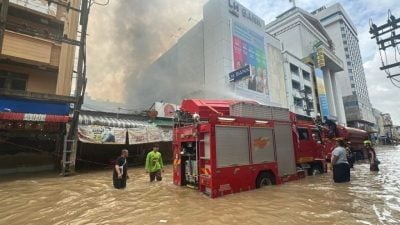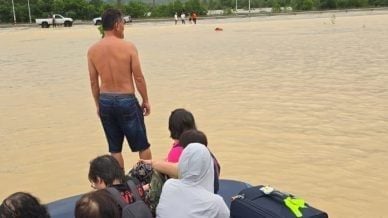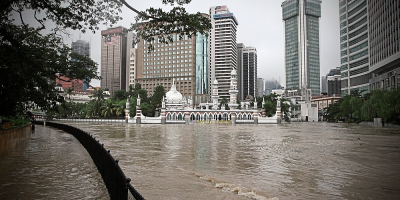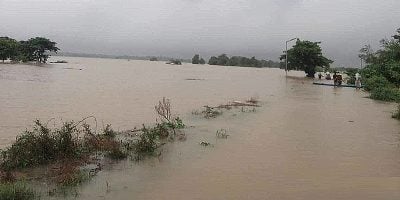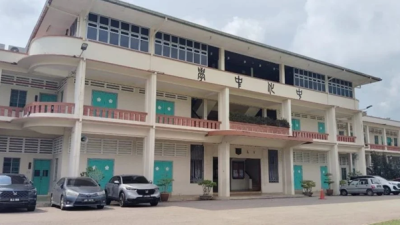Dr Sasidaran Krisnasamy, who took part in the operation to rescue the stranded animals, is the animal welfare department chief of Malaysian Small Animal Veterinary Association (MSAVA).
After learning about the operation, he made up his mind to surrender his leisure time to saving the animals stranded by the floods. He not only served at the makeshift clinic but also went straight into the disaster zone to treat the animals which could not be brought to the mobile clinic.
He was glad the operation had the support of relevant authorities and the people. In addition to three co-organizers, SPCA Selangor and the state veterinary department also joined in as they worked hand in hand to save the poor animals.
Animals need immediate care, too
Dr Sasidaran told Sin Chew Daily that was an unprecedented operation in which the various participating organizations looked for volunteers, sponsors, medicines, food, and got the duty rosters all filled up in eight different shifts.
“Besides on duty at the mobile clinic, we also went into our assigned housing areas to treat the animals. By the fifth day we had covered almost the entire disaster zone.
“After learning about the free treatment service we offered, some of the owners took their pets to us. For those who did not have the time or means to travel to the mobile clinic, we would go to them instead.
“If the condition is too serious, we will take the animal out and send to nearby animal clinics.”
Dr Sasidaran explained that the operation had been launched because like humans, animals would also get infected easily with bacteria and fleas and catch the cold if soaked in water. They need treatment as soon as possible.
“When we went to the flooded area today, we saw a dog curled up on the roof, reluctant to come down. A local resident said it had been there for three to four days and even though the floodwaters had subsided, it was still frightened and unwilling to let us go near it.
“Actually animals could get aggressive when frightened.”
Dr Sasidaran was devastated by what he saw in the disaster zone. Some of the flood victims were seen still hugging their dead pets, some busily cleaning up while trying to hold back their tears.
“Some of the pet owners felt guilty for not taking their pets to safety when they were fleeing the floods, but we understand there was nothing they could do during such critical moment. All we can do is to comfort them and try to lessen their sense of guilt.”

Heartbreaking scene
Other than the many veterinarians, the operation also owes its success to the SPCA Selangor which managed to summon hundreds of volunteers to head to the flooded areas in boats before the waters had even receded in order to rescue the stranded animals there.
SPCA’s Kelvin read about the animals stranded by floods on social media and after three other organizations jointly started the mobile animal clinic service, he called up SPCA chairperson Christine Chin and proposed to her that they should join the operation.
On the same night, Kelvin started to contact the volunteers and succeeded in getting approximately 400 of them to join him within a short period of time. They started work the following day.
Recalling his first day at the disaster zone, Kelvin said, “At that time the water was still at waist level, and in places near to the river, it could even reach the shoulders. We could only get there by boat.
“However, due to safety reasons, the enforcement personnel did not allow us to travel there by boat and all we could do was to walk there.
“In places accessible by car, we sent food there in 4WD and throw the food to the cats and dogs taking shelter on the rooftop or higher ground.
“There were carcasses of dead animals floating on the water. All kinds of animals, some already swollen up. We could spot ten to 20 dead animals each day, mostly dogs.
“We have even seen non-animal corpse!”
An animal activist himself, Kelvin kept moving forward to rescue the surviving animals although he was utterly devastated by what he saw.
Normally they would leave food and clean water enough for three days’ consumption for the surviving animals at least to keep them fed until the water has subsided and they can escape to safety by themselves.
The first day’s rescue operation covered some 360 square meters and the volunteers were assigned their duties to make sure every nook and corner was taken care of.
“We saved or fed two to three hundred animals over the next couple of days. We only managed to save about a dozen animals on the first day, and more and more on the following days.
We would take out animals that require treatment, and go back there later.”
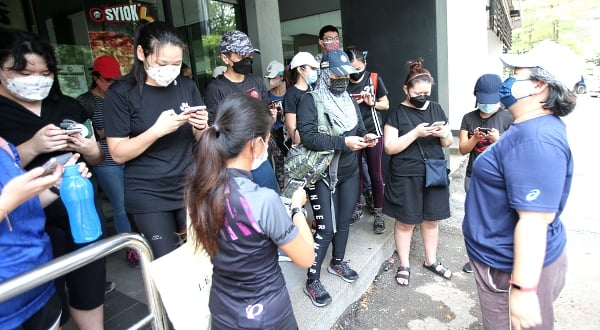
Previous experience
That was not the first time Kelvin involved himself in a disaster relief operation. Back in 2013 during the floods in Kelantan, he also joined the SPCA team to rescue the stranded animals there albeit without a large-scale mobile animal clinic service.
He said due to the severity of the latest floods in Selangor and the fact that the floodwaters took a whole week to recede after the rain had stopped, they had to put in more manpower and resources this time.
Kelvin said SPCA was the only animal protection group that had prior animal rescue experience, and he was the only SPCA member who had previous experience in animal rescue, making him the best person to plan and take charge of the latest operation.
“I come here at nine every morning to assign the duties. Although the mobile clinic service ends at six in the evening, we still have to pack up and settle the rescued animals before we can eventually leave at around eight.
“We are too busy from morning till night and have no time to feel sad about anything.
“There are plenty of animals out there waiting for us to help.”
SPCA chairperson Christine Chin told Sin Chew Daily that during the floods in Hat Yai in southern Thailand 15 years ago, the organization raised some RM25,000 to help the local animal rights groups in their rescue operation.
“With the floods happening right here in Malaysia this time, we have this irrefutable obligation to take part in the animal rescue operation, get the volunteers, make arrangements for food and initiate the crisis management in a bid to save more animals.”
She said SPCA would try to locate the owners of the rescued animals through various channels. If they fail to contact the owners, they will arrange for the animals to momentarily stay with a foster family until the owners come back to claim their pets later. Adoption will be arranged for unclaimed animals.
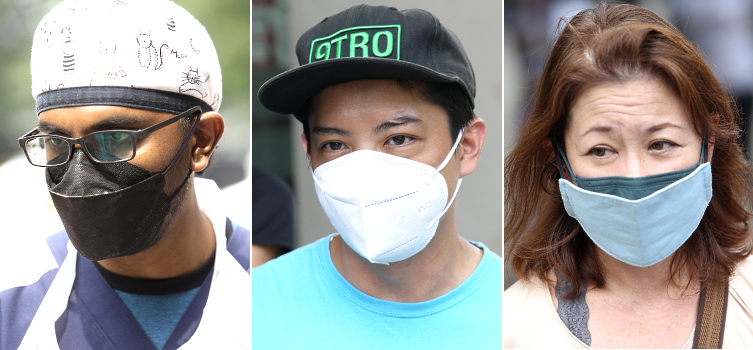
Read also:
ADVERTISEMENT
ADVERTISEMENT






